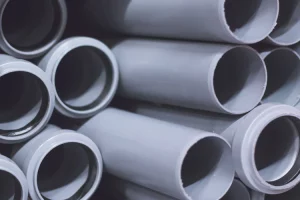
Understanding the differences between PPR and PEX pipes
PPR (randomized polypropylene) and PEX (cross-linked polyethylene) pipes are popular choices for plumbing systems due to their durability, pressure resistance, and ease of installation. However, these plastic pipes have significant differences that homeowners and builders should consider before deciding. This article will provide helpful information about both types of pipes' features, applications, advantages, and disadvantages.
The importance of choosing the suitable pipes for your plumbing system
Your entire plumbing system's performance, durability, and safety depend on selecting the best lines for its construction. Improper uses can result in decreased efficiency, shorter lifetime, high maintenance costs, and risk of leaks and floods. Common materials for plumbing pipes include copper, PPR, and PEX.
Comparing PPR and PEX pipes
PPR pipes are known for their high-temperature resistance and are often used in cold and hot water supply systems and sewage disposal. PPR pipes are also suitable for use in areas with hard water and heating systems due to their increased resistance to high temperatures and water pressure. However, PPR pipes are more rigid than PEX pipes, and their use is limited at very high temperatures. PPR pipes can also be affected by UV rays, so they cannot be used at high altitudes or in conditions of high UV radiation.
PEX pipes, on the other hand, offer greater flexibility and are more efficient in heating installations than PPR pipes. They are resistant to corrosion and chemicals, making them an ideal choice for many installation projects. However, PEX pipes are not recommended for use in areas with high chlorine levels and are sensitive to prolonged exposure to sunlight.
Factors to consider when choosing plumbing pipes
When choosing suitable pipes for your home plumbing, consider the following factors:
- Temperature and pressure resistance: PPR and PEX pipes resist temperature and pressure.
- Corrosion resistance: PPR and PEX pipes are highly durable and corrosion-resistant.
- Ease of installation and maintenance: PEX pipes are more flexible and easier to handle than PPR pipes, reducing installation time and costs.
- Value for money: PPR and PEX pipes offer lower prices than other materials, such as copper, while maintaining good quality.
In conclusion, PPR and PEX pipes can be ideal for homeowners and builders looking to replace old, rusty pipes with modern materials that can withstand temperatures, pressure, and corrosion. Before making a decision, carefully consider the specific needs of your plumbing system and the advantages and disadvantages of each type of pipe. For more information on PPR and PEX pipes, check out these resources: Beyond Plastics report, Copper Pipe Types, California PEX Pipe Plans, and USA Today Investigation on PVC Pipes. Understanding the compatibility of PPR and PEX pipes with your existing system is crucial to ensure long-lasting performance and safety. Additionally, when considering plumbing upgrades, it's worth exploring solutions like choosing a home water filtration system to further enhance water quality and safeguard your household’s health. By investing in the right materials and complementary systems, you can create a plumbing network that is efficient, durable, and tailored to your needs.

James Smith is our editor. He is an accomplished and versatile news writer with over a decade of experience covering a wide range of topics, including politics, business, and real estate. Throughout his career, James has been dedicated to uncovering the truth and presenting unbiased, factual reporting to his audience.














